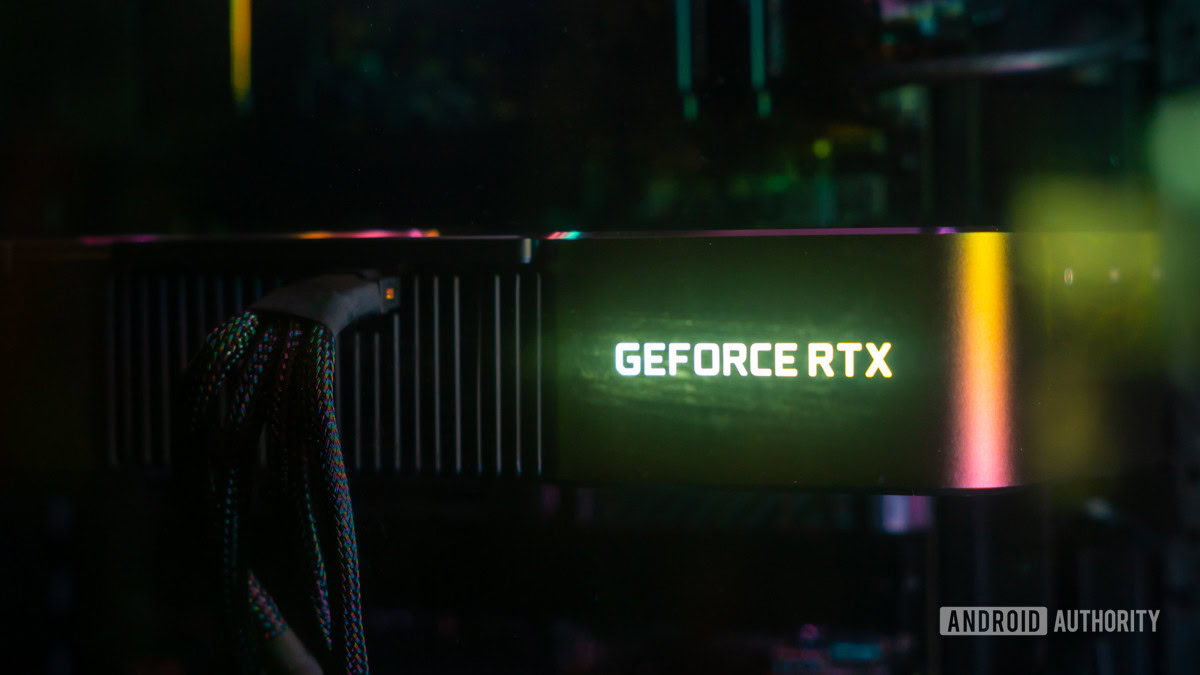Affiliate links on Android Authority may earn us a commission. Learn more.
Does AMD FreeSync work with NVIDIA graphics cards?

If you’re interested in FreeSync, you’re probably aware that it’s AMD’s answer to keeping GPU framerates in sync with your display’s refresh rate, primarily for responsive gaming. But many gamers have NVIDIA graphics cards, which can be a problem if a display only supports FreeSync. So what are your options if your PC has that split?
QUICK ANSWER
Yes, FreeSync works on most NVIDIA cards. You'll need a "G-Sync Compatible" monitor connected via DisplayPort 1.2 or later. Compatible NVIDIA cards include GTX 10- or 16-series models, as well as RTX cards from the 20 series onwards.
JUMP TO KEY SECTIONS
Does FreeSync work with NVIDIA graphics cards?

Yes. That’s been the case since 2019, when NVIDIA revealed a software version of G-Sync that extended compatibility. As a rule, you’re better off using a monitor with hardware support for G-Sync, but the initiative means that you won’t have to replace an otherwise excellent FreeSync display to avoid screen tearing artifacts.
You’ll want to check NVIDIA’s list of “G-Sync Compatible” monitors. You can ignore ones listed as supporting “G-Sync” or “G-Sync Ultimate,” since those have direct hardware support for G-Sync anyway, but if a model isn’t G-Sync Compatible, that probably means its refresh rates are outside of NVIDIA specs. The monitor may still work, but that’s not guaranteed.
Which NVIDIA graphics cards work with FreeSync?
You can use any GeForce GTX 10- or 16-series card, such as the 1080 Ti, as well any RTX card from the 20 series onwards. Just be aware that you need to be running Windows 10 or later, and connect via DisplayPort 1.2 or better. You can’t connect to a FreeSync monitor using HDMI.
How to enable FreeSync with an NVIDIA graphics card
When you’re ready to take a shot, follow this checklist:
- Update your NVIDIA drivers to the latest ones available. Use the GeForce Experience app for Windows, or else check NVIDIA’s downloads page.
- Restart your PC.
- Check your monitor’s native menu system to see if FreeSync has been automatically enabled. This may be labelled in different ways, but could fall under game-related settings.
- If FreeSync hasn’t been enabled, you may be able to force the feature. Open the NVIDIA Control Panel app, click on Manage 3D settings, then click the Monitor Technology drop-down and choose G-SYNC Compatible.
- While in the NVIDIA Control Panel, check that Preferred fresh rate is toggled to Highest available, and/or that Vertical sync is set to On. Click Apply to make settings take effect. Note that if you turn on vertical sync (V-sync) this way, you should disable in-game V-sync settings.
- In the Control Panel’s sidebar, click on Set up G-SYNC (under Display). For your FreeSync monitor, tick the Enable G-SYNC, G-SYNC Compatible and Enable settings for the selected display model checkboxes. When you’re done, click Apply.